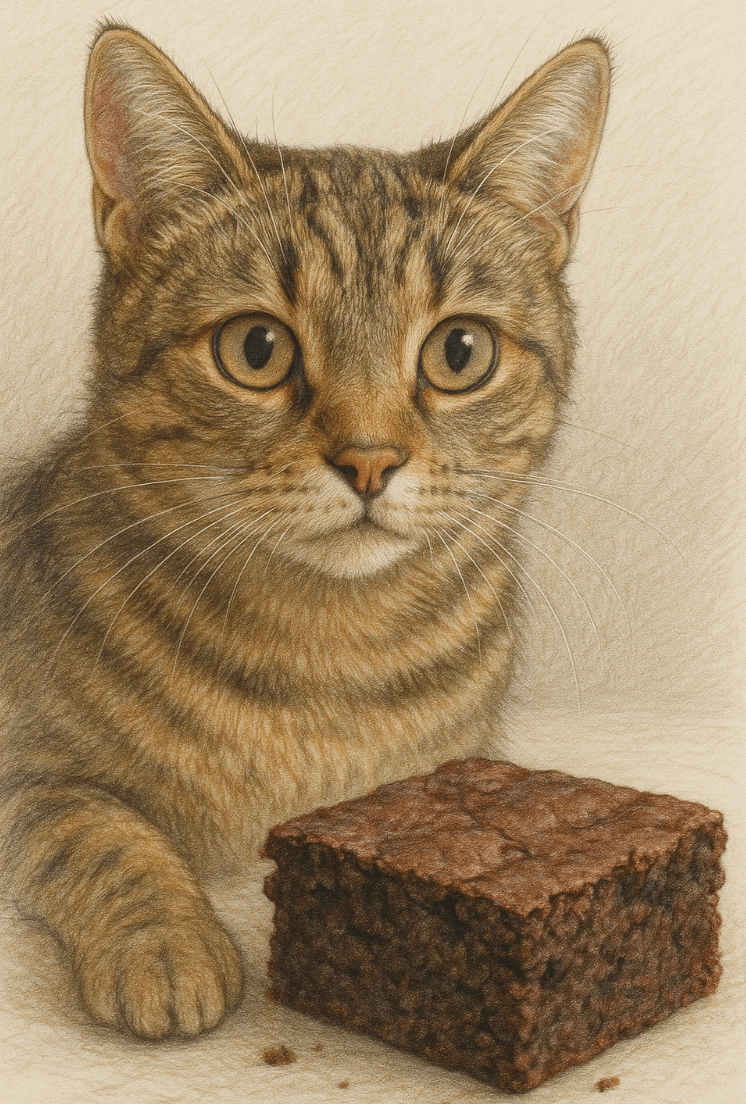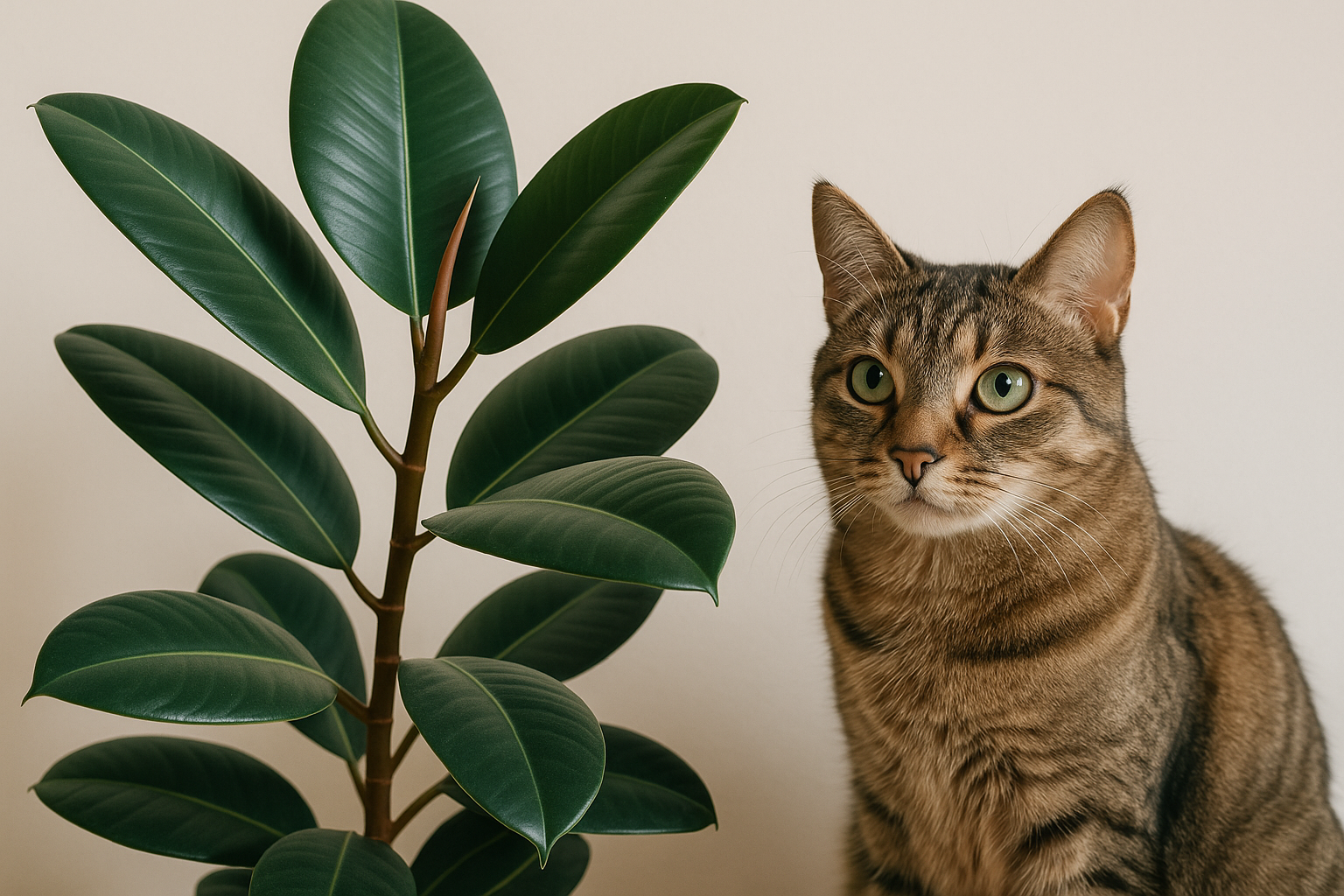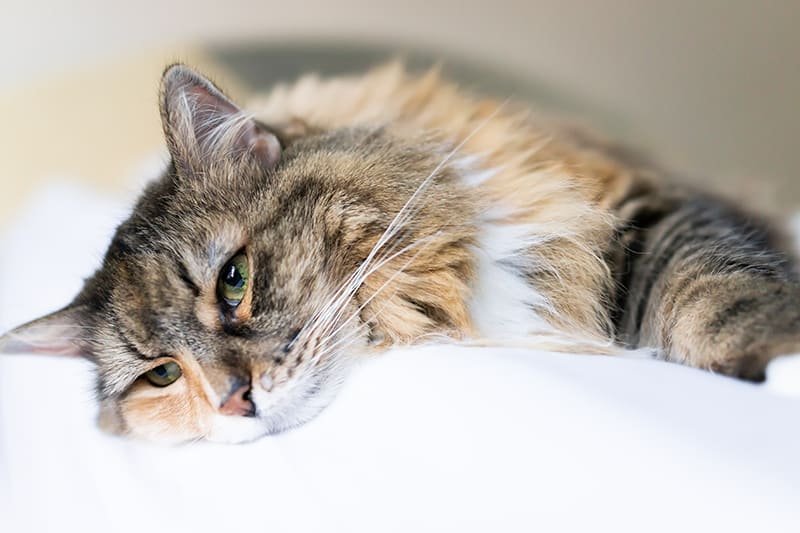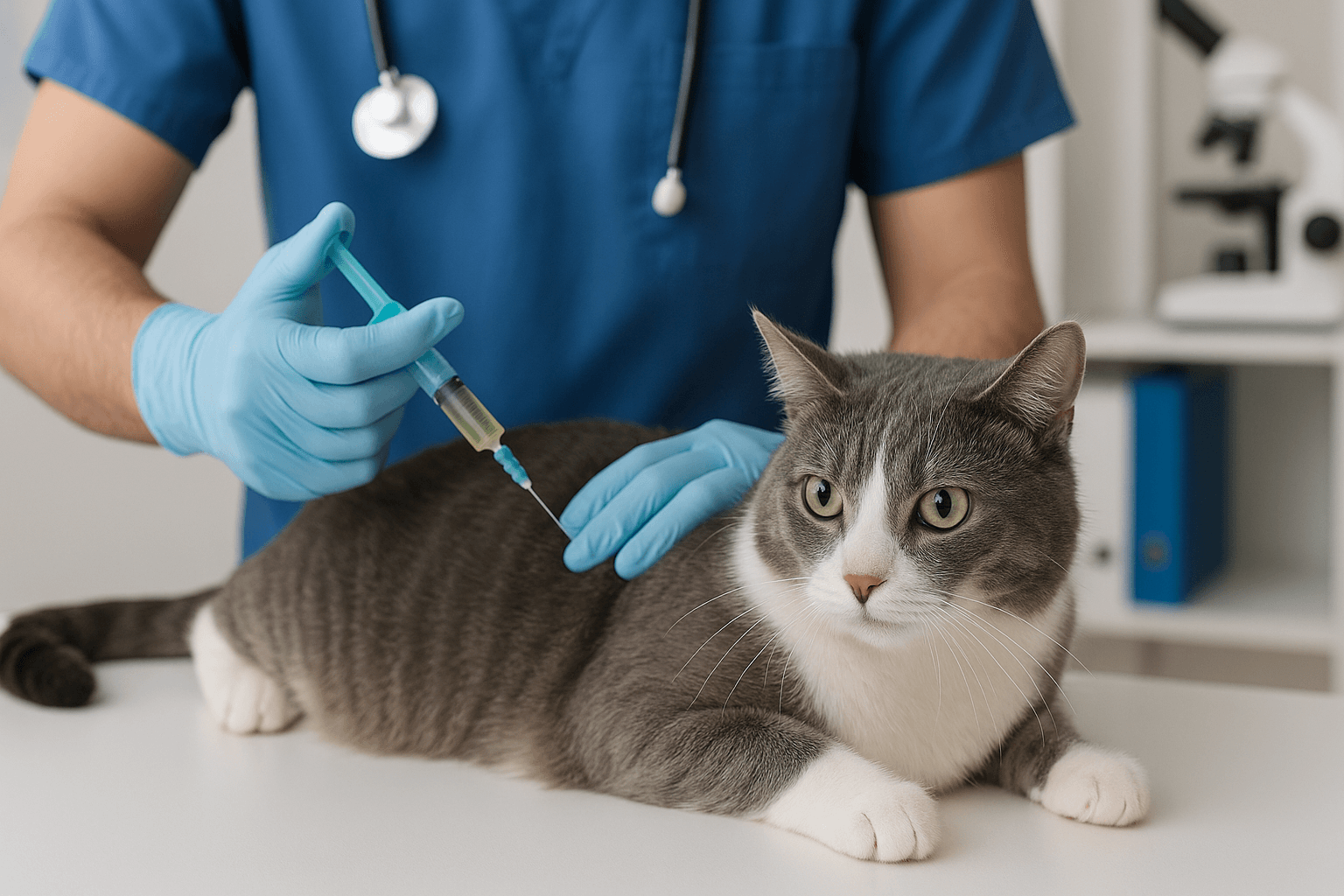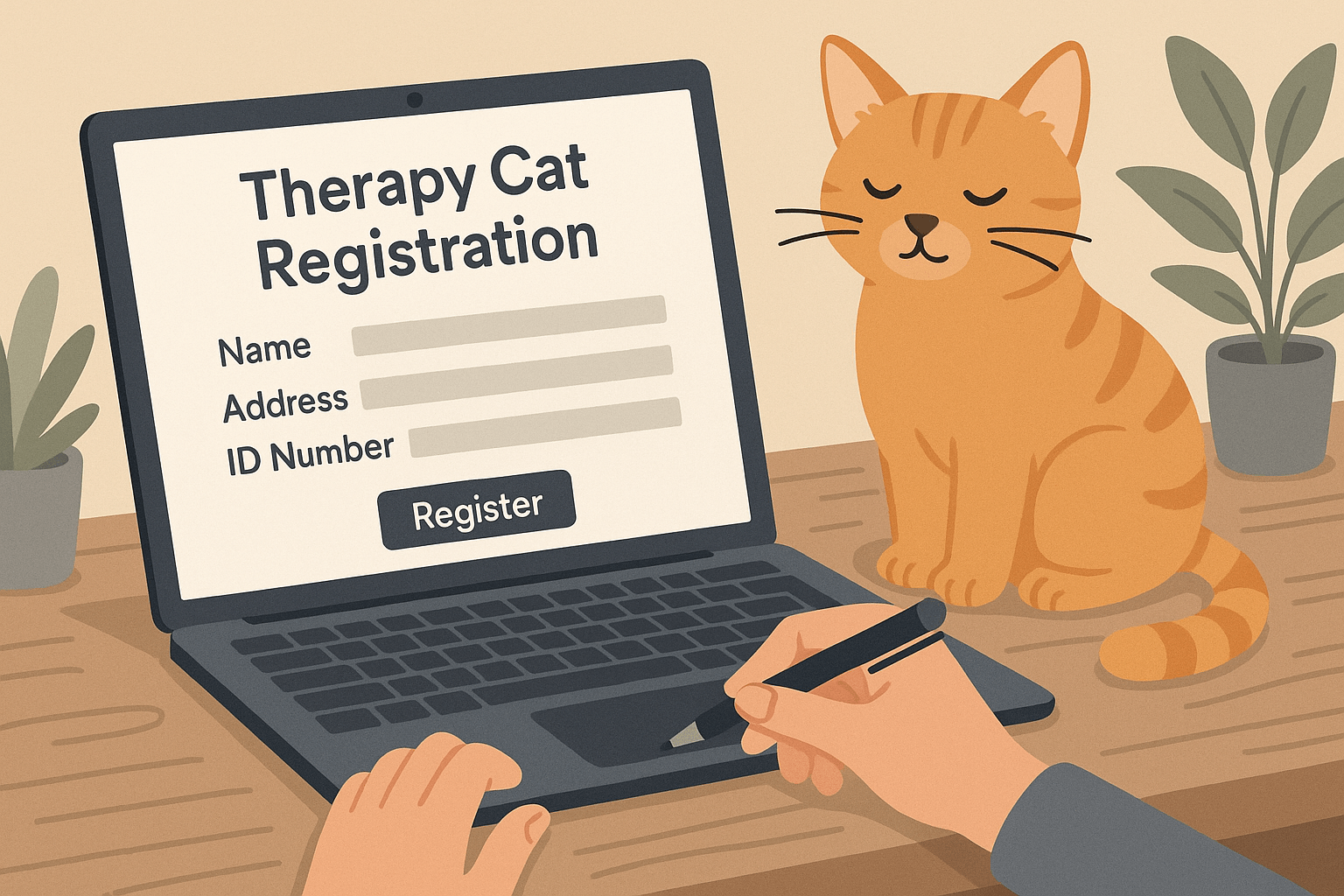Can Cats Eat Brownies? What You Need to Know
Brownies are a beloved treat for humans, but when it comes to sharing them with our feline friends, caution is essential. While cats may be curious about the smell or taste of brownies, these sweet treats can pose serious risks to their health. Chocolate, a primary ingredient in brownies, contains compounds that are toxic to cats, and other ingredients like sugar and dairy can also cause digestive issues. In this blog post, we’ll explore whether cats can safely eat brownies, the potential dangers, and safer alternatives to satisfy your cat’s curiosity. Understanding what’s safe for your pet ensures their well-being and keeps them happy and healthy.
Why Brownies Are Dangerous for Cats
Feeding brownies to your cat can lead to serious health problems due to their harmful ingredients. Here’s why brownies should never be on your cat’s menu.
Chocolate Contains Theobromine:
Theobromine is toxic to cats and can cause symptoms like vomiting, diarrhea, rapid breathing, seizures, and even death in severe cases.High Sugar Content:
Excessive sugar can lead to obesity, diabetes, and dental problems in cats over time, making brownies an unhealthy choice.Dairy Ingredients May Cause Lactose Intolerance:
Many brownies contain milk or butter, which can upset a cat’s stomach since most adult cats are lactose intolerant.Additives and Artificial Flavors:
Some brownies include artificial sweeteners like xylitol, which is highly toxic to cats and can cause liver failure.Rich and Fatty Foods Can Cause Pancreatitis:
The high fat content in brownies can inflame a cat’s pancreas, leading to pain, vomiting, and long-term health issues.
These risks highlight why brownies are not a safe treat for cats and should be avoided entirely.
Signs Your Cat May Have Eaten Brownies
If your cat accidentally consumes brownies, it’s important to recognize the symptoms of toxicity quickly. Early detection can make a significant difference in their recovery.
Vomiting and Diarrhea:
These are common signs of gastrointestinal distress caused by chocolate or dairy in brownies.Restlessness or Hyperactivity:
Theobromine can stimulate your cat’s nervous system, leading to unusual energy or agitation.Increased Thirst and Urination:
Chocolate toxicity can affect your cat’s kidneys, causing excessive thirst and frequent urination.Seizures or Tremors:
In severe cases, theobromine poisoning can lead to seizures, muscle tremors, or difficulty walking.Lethargy or Weakness:
Cats may become unusually tired or weak if they’ve ingested something toxic, signaling a need for immediate care.
If you notice any of these symptoms, contact your veterinarian immediately to ensure your cat receives proper treatment.
Check this guide 👉Can Cats Eat Baking Soda? Best 7 Expert Tips!
Check this guide 👉Can Cats Eat Cicadas? Best 7 Expert Tips!
Check this guide 👉Can Cats Eat Goat Cheese? Best 7 Expert Tips!
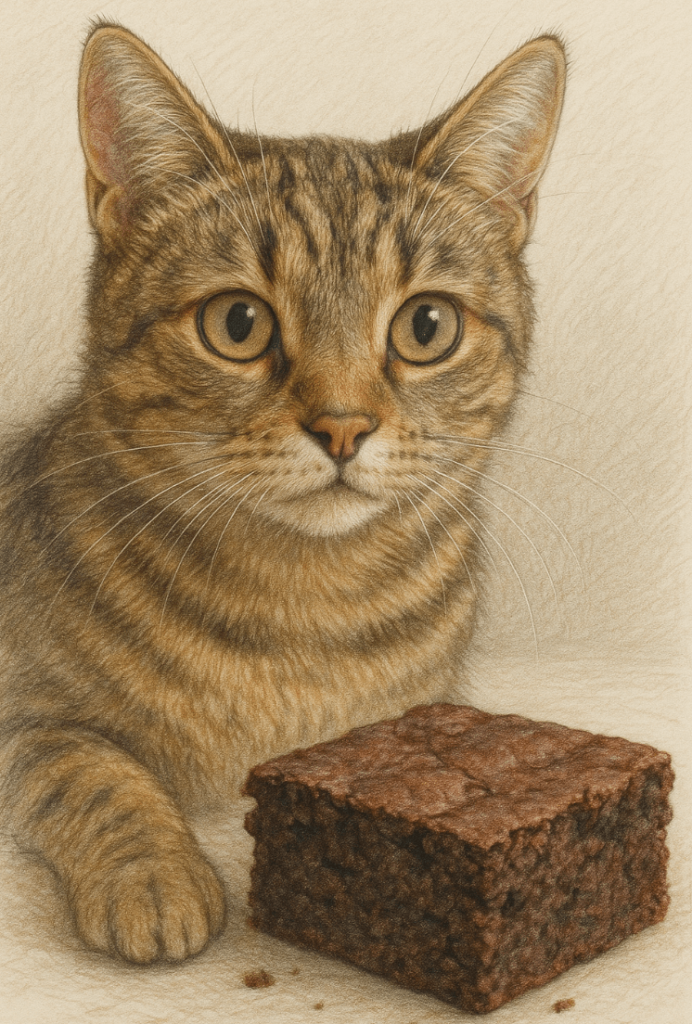
Safe Treats for Cats | Foods to Avoid Feeding Cats |
|---|---|
Plain cooked chicken (unseasoned) | Chocolate-based desserts like brownies |
Small pieces of plain fish | Foods containing xylitol or artificial sweeteners |
Catnip-infused treats | Dairy products like milk or cheese |
Freeze-dried meat snacks | High-fat or fried foods |
Fresh fruits like blueberries | Onions, garlic, and other toxic plants |
What to Do If Your Cat Eats Brownies
If your cat accidentally eats brownies, acting quickly can help minimize the risk of serious health complications. Follow these steps to ensure their safety.
Assess the Situation:
Determine how much your cat ate and whether the brownies contained chocolate or other harmful ingredients.Contact Your Veterinarian Immediately:
Call your vet or an animal poison control hotline for professional advice tailored to your cat’s situation.Do Not Induce Vomiting Without Guidance:
Inducing vomiting at home can be dangerous without veterinary supervision, so seek professional help first.Monitor Your Cat Closely:
Watch for symptoms of toxicity, such as vomiting, diarrhea, or hyperactivity, and report them to your vet promptly.Prevent Future Accidents:
Store brownies and other human treats securely out of your cat’s reach to avoid similar incidents in the future.
Taking these steps ensures your cat receives the care they need while preventing further harm.
Safer Alternatives to Brownies for Cats
While brownies are off-limits, there are plenty of safe and healthy treats you can offer your cat to satisfy their cravings.
Plain Cooked Meat:
Small portions of unseasoned chicken, turkey, or beef are excellent protein-rich options for cats.Cat-Specific Treats:
Commercial cat treats are formulated to meet your cat’s nutritional needs and are a safe alternative to human food.Freeze-Dried Snacks:
Freeze-dried liver, salmon, or chicken provide a tasty and nutritious option that cats love.Fresh Fruits (In Moderation):
Blueberries, watermelon (seedless), and bananas are safe fruits that most cats enjoy in small amounts.Homemade Cat Treats:
Simple recipes using cat-safe ingredients, like tuna and pumpkin, allow you to create healthy treats at home.
These alternatives ensure your cat enjoys delicious snacks without compromising their health.
Common Mistakes to Avoid When Feeding Cats Human Food
Sharing human food with cats can seem harmless, but certain mistakes can lead to serious consequences. Avoid these pitfalls to keep your cat safe.
Feeding Toxic Ingredients:
Foods like chocolate, onions, and garlic are toxic to cats and should never be shared.Overlooking Portion Sizes:
Even safe foods can cause digestive upset if given in large quantities; moderation is key.Ignoring Allergies or Sensitivities:
Some cats may have allergies or intolerances to specific ingredients, so introduce new foods gradually.Assuming All “Healthy” Foods Are Safe:
Foods that are nutritious for humans, like avocado or raisins, can be harmful to cats.Leaving Food Unattended:
Cats are curious and may sneak bites of unsafe foods if left within their reach.
Avoiding these mistakes ensures your cat stays safe while enjoying occasional treats.
Understanding Chocolate Toxicity in Cats
Chocolate toxicity is a serious concern for cats, and understanding its effects can help you prevent accidental poisoning.
The Role of Theobromine:
Theobromine is a compound found in chocolate that cats cannot metabolize efficiently, leading to toxic buildup.Dark Chocolate Is More Dangerous:
Dark chocolate contains higher levels of theobromine compared to milk or white chocolate, making it more hazardous.Symptoms Vary by Amount Consumed:
Smaller amounts may cause mild symptoms, while larger doses can lead to severe reactions or even death.Immediate Veterinary Care Is Crucial:
Time is critical in treating chocolate toxicity, so seek professional help as soon as possible.Prevention Is Key:
Keeping chocolate and chocolate-containing foods out of reach is the best way to protect your cat.
Understanding these factors helps you take proactive steps to safeguard your cat’s health.
Tips for Creating a Cat-Friendly Kitchen Environment
Preventing your cat from accessing harmful foods requires some simple adjustments to your kitchen setup.
Store Food Securely:
Keep brownies, chocolate, and other unsafe foods in sealed containers or cupboards your cat cannot access.Use Childproof Locks:
Install locks on cabinets or drawers where dangerous foods or ingredients are stored.Clean Up Spills Immediately:
Accidental spills of chocolate or sugary substances should be cleaned up promptly to prevent ingestion.Supervise Your Cat in the Kitchen:
If your cat likes to explore the kitchen, keep an eye on them to avoid accidents.Teach Boundaries:
Train your cat to stay away from countertops and tables where food is prepared or left out.
These tips create a safer environment for your cat, reducing the risk of accidental poisoning.
Frequently Asked Questions About Cats and Brownies
Are all types of brownies dangerous for cats?
Yes, all brownies contain chocolate, sugar, or other harmful ingredients that make them unsafe for cats.
What should I do if my cat licks chocolate frosting?
Monitor your cat closely for symptoms of chocolate toxicity and contact your vet if you notice any signs of illness.
Can kittens eat brownies?
No, kittens are even more vulnerable to toxins and should never consume brownies or chocolate.
How much chocolate is toxic to cats?
Even small amounts of chocolate can be harmful, and darker chocolates contain higher levels of theobromine, making them more dangerous.
Are store-bought cat treats safe?
Yes, commercially available cat treats are specifically designed to be safe and nutritious for cats.
Prioritizing Your Cat’s Health Over Curiosity
While it might be tempting to share your favorite treats with your cat, brownies and similar human foods are simply not worth the risk. Cats have unique dietary needs and sensitivities that must be respected to keep them safe and healthy. By understanding the dangers of feeding brownies to your cat and opting for safer alternatives, you can ensure your furry friend stays happy and thriving. Remember, your cat relies on you to make the best choices for their well-being—so always prioritize their health over momentary indulgence.
Is the Rubber Tree Cat Safe? Best 7 Expert Tips! Discover expert advice on keeping rubber plants safely in cat-friendly homes and learn top tips for pet-safe plant care.
Low Red Blood Cell Count in Cats: Best 7 Expert Tips! Discover causes, symptoms, and treatment options for feline anemia. Learn how to support your cat’s health effectively with expert advice.
Understanding Megacolon Treatment: Best 7 Expert Tips! Discover effective strategies to manage feline megacolon, from dietary changes to surgical options, ensuring your cat’s comfort and long-term health.
How to Register a Therapy Cat: Best 7 Expert Tips! Discover essential steps to certify your cat as a therapy animal, prepare them for training, and make a meaningful impact in therapeutic settings.

